 W
WFrancesco Alborea was an Italian cellist, also known as Franciscello or Francischello.
 W
WGiambattista Basile was an Italian poet, courtier, and fairy tale collector. His collections include the oldest recorded forms of many well-known European fairy tales.
 W
WAntonio de Bellis was an Italian painter from Naples, active in the Baroque period. Along with Jusepe de Ribera, Bernardo Cavallino and Massimo Stanzioni he was one of the major artists working in Naples in the first half of the seventeenth century, under the influence of the painter Caravaggio.
 W
WAbate Andrea Belvedere was an Italian painter of the Baroque period.
 W
WGiovanni Alfonso Borelli was a Renaissance Italian physiologist, physicist, and mathematician. He contributed to the modern principle of scientific investigation by continuing Galileo's practice of testing hypotheses against observation. Trained in mathematics, Borelli also made extensive studies of Jupiter's moons, the mechanics of animal locomotion and, in microscopy, of the constituents of blood. He also used microscopy to investigate the stomatal movement of plants, and undertook studies in medicine and geology. During his career, he enjoyed the patronage of Queen Christina of Sweden.
 W
WLelio Brancaccio, Marquess of Montesilvano, was a Neapolitan commander of Habsburg armies in Italy, the Low Countries and Catalonia.
 W
WRestaino Cantelmo-Stuart, 8th Duke of Pópoli, 3rd Prince of Pettorano was a military leader from Naples in the service of Spain, best known for the Siege of Barcelona (1713–14).
 W
WGiovanni Battista Caracciolo (1578–1635) was an Italian artist and important Neapolitan follower of Caravaggio.
 W
WBarthélemy Chasse (1659-1720) was an Italian-born French painter.
 W
WGiacomo Colombo was an Italian sculptor, painter and engraver, he worked in Naples, Italy in the late 17th and early 18th centuries.
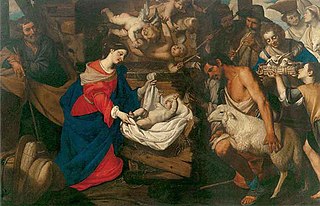 W
WPacecco De Rosa was an Italian painter, active in Naples.
 W
WBernardo de' Dominici or Bernardo De Dominici was an Italian art historian and painter of the late-Baroque period, active mainly in Naples. As a painter he was known for his landscapes, marine vedute and genre scenes in a style characteristic of the Bamboccianti. He is now mainly known for his art historical writings and in particular the Vite dei Pittori, Scultori, ed Architetti Napolitani, a three volume collection of brief biographies of Neapolitan artists.
 W
WAscanio Filomarino was an Italian Roman Catholic cardinal, who was Archbishop of Naples from 1641 to 1666.
 W
WLuca Forte was an Italian painter of the Baroque period, active mainly as a still-life painter in Naples.
 W
WBlessed Antonio Franco was a Roman Catholic Italian priest and prelate of Santa Lucia del Mela. Franco was beatified in 2013 when a miracle was discovered to have been performed through his intercession. Cardinal Angelo Amato beatified him on behalf of Pope Francis.
 W
WDomenico Gargiulo called Micco Spadaro was an Italian painter of the Baroque period, mainly active in Naples and known for his landscapes, genre scenes, and history paintings.
 W
WLuca Giordano was an Italian late Baroque painter and printmaker in etching. Fluent and decorative, he worked successfully in Naples and Rome, Florence and Venice, before spending a decade in Spain.
 W
WOnofrio Antonio Gisolfi was an Italian engineer and architect, active from 1637 until his death.
 W
WFrancesco del Giudice was a Roman Catholic cardinal from 1690 to 1725 who also held a variety of other ecclesiastical and governmental offices.
 W
WGennaro Greco also known as "Il Mascacotta" (1663–1714) was an Italian architectural painter who was active in Naples during the late Baroque period. He is known for his architectural paintings, capricci, compositions with ruins, as well as his vedute. His vedute fall mostly in the category of the so-called vedute ideate which represent closely observed views of completely imaginary landscapes.
 W
WFabio Lagonissa (1584/85–1659) was an Italian bishop and papal diplomat.
 W
WAndrea Malinconico was an Italian painter of the Renaissance period, active near his natal city of Naples. He was a pupil of Massimo Stanzione.
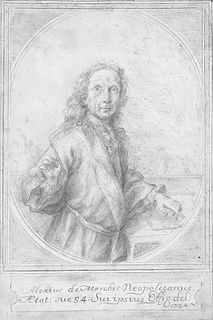 W
WAlessio de Marchis or il Marchis was an Italian painter of the early 18th century, active mainly in Rome and Urbino, mainly as a landscape painter.
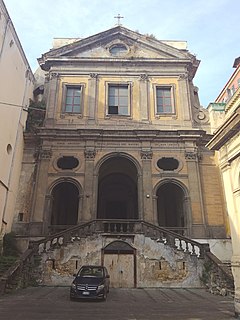 W
WPietro de Marino was an Italian architect born in Naples and active there between 1629 and 1666. His works include the former church of San Potito.
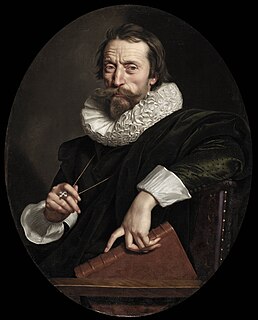 W
WGiambattista Marino was an Italian poet who was born in Naples. He is most famous for his long epic L'Adone.
 W
WMasaniello was an Italian fisherman who became leader of the revolt against the rule of Habsburg Spain in Naples in 1647.
 W
WMarzio Masturzo was an Italian painter of the Baroque period, active near his natal city of Naples. He was a pupil of Paolo Greco, then, along with Salvatore Rosa, a fellow-pupil of Aniello Falcone. Like Falcone, he often painted battle scenes. He appears to have joined during the Masaniello revolt, a loose fraternity of artists called the Compagnia della morte involved in the rebellion.
 W
WFrancesco de Mura was an Italian painter of the late-Baroque period, active mainly in Naples and Turin. His late work reflects the style of neoclassicism.
 W
WFilippo Napoletano, whose real name was Filippo Teodoro di Liagno was an Italian artist, with a varied output, mainly landscape and genre scenes and also drawings or etchings of diverse, often particular, items such as exotic soldiers, skeletons of animals, or cityscapes.
 W
WCamillo Francesco Maria Pamphili was an Italian Catholic cardinal and later nobleman of the Pamphili family. His name is often spelled with the final long i orthography; Pamphilj.
 W
WPaolo Porpora (1617–1673) was an Italian painter of the late-Baroque, who was active mainly in Naples and specialized in floral still lifes. He is documented as a pupil of Giacomo Recco, the father of Giuseppe Recco, and said to have worked under Aniello Falcone. He joined the Roman Accademia di San Luca from 1656 to 1658. He appears to have been influenced in Rome by Netherlandish still-life painters. Among his pupils were Giovan Battista Ruoppolo and the Neapolitan Onofrio Loth.
 W
WFilippo Raguzzini was an Italian architect best known for a range of buildings constructed during the reign of Benedict XIII.
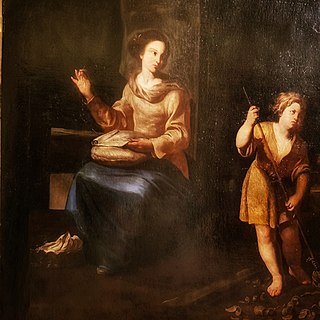 W
WDiana de Rosa, also known as Annella de Rosa or Annella di Massimo, was a seventeenth-century Neapolitan painter.
 W
WSalvator Rosa was an Italian Baroque painter, poet, and printmaker, who was active in Naples, Rome, and Florence. As a painter, he has been described as "unorthodox and extravagant" as well as being a "perpetual rebel" and a proto-Romantic.
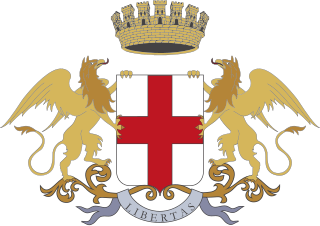 W
WAgostino Saluzzo was the 122nd Doge of the Republic of Genoa, king of Corsica, prince of Lequile and duke of Corigliano Calabro.
 W
WFabrizio Santafede or Fabrizio Santaféde was an Italian painter known for his altarpieces. He painted in a late-Mannerist style and his style marks the transition from Mannerism to Baroque.
 W
WThe Venerable Sister Serafina of God, O.Carm.,, also known as Seraphine of Capri, was the founder of seven Carmelite monasteries of nuns in southern Italy. The cause for her canonization has been formally accepted by the Holy See, which has declared her to have lived a life of heroic virtue.
 W
WTroiano Acquaviva of Aragon was an Italian cardinal and Catholic archbishop. Acquaviva was from a noble family with close ties to the Spanish crown; he was the nephew of Cardinal Francesco Acquaviva d'Aragona. Created cardinal in 1732, the following year he became cardinal-protector of Santa Cecilia in Trastevere, for which he provided a new façade. In 1734 King Philip V of Spain appointed him Spanish ambassador to the Holy See.
 W
WFrancisco de Tutavilla y del Tufo, Duque de San Germán,, Commander of Peñausende from the Spanish Military Order of Santiago and Sieur of Campana de Albalá and Saucedilla, was an Italian - Spanish military and Viceroy, serving Kings Philip IV of Spain and Charles II of Spain.
 W
WAndrea Vaccaro was an Italian painter of the Baroque period. Vaccaro was in his time one of the most successful painters in Naples, a city then under Spanish rule. Very successful and valued in his lifetime, Vaccaro and his workshop produced many religious works for local patrons as well as for export to Spanish religious orders and noble patrons.
 W
WDomenico Antonio Vaccaro was an Italian painter, sculptor and architect. He created many important sculptural and architectural projects in Naples. His later works are executed in an individualistic Rococo style.
 W
WLorenzo Vaccaro was an Italian late-Baroque sculptor. He worked in a formalized restrained style.
 W
WNicola Vaccaro was an Italian painter, theatre director and opera librettist in Naples. He was known for his religious and allegorical paintings who created easel paintings as frescos. He was a specialist figure painter who regularly collaborated with specialist still life painters on decorative Baroque still lifes and garland paintings. Vaccaro attempted to adapt the stylistic features of 17th-century Neapolitan tradition to the new Classicist and Baroque trends towards increasing Arcadian tendencies. He proposed his own specific form of Academism, aimed at revitalizing the figurative culture in Naples.
 W
WGiambattista Vico was an Italian political philosopher and rhetorician, historian and jurist of the Age of Enlightenment. He criticized the expansion and development of modern rationalism, was an apologist for Classical Antiquity, finding Cartesian analysis and other types of reductionism impractical to daily life, and was the first expositor of the fundamentals of social science and of semiotics.